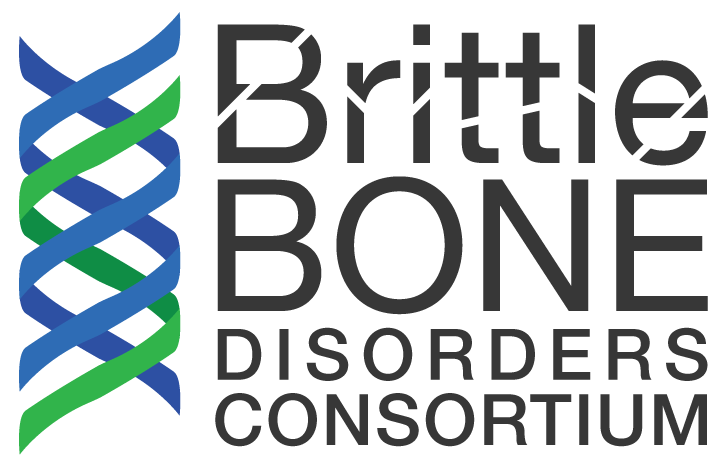Background
Osteogenesis Imperfecta (OI) is a rare disorder that causes bones to break easily. People with OI may break bones with little or no trauma, have dentinogenesis imperfecta (DI), and lose hearing in adult years. It is seen in both genders and all races. OI can range from very severe to very mild. Individuals with the most severe type may die at birth or survive. If they survive, they may have bowed arms and legs, very short stature or the inability to walk. People with the mildest form of OI break bones occasionally, have normal height, and a normal lifespan. Breaks can occur in any bone, but are most common in the arms and legs. People with OI also often have problems with the spine. These problems include compression fractures and scoliosis (a curvature of the spine). DI is characterized by grey or brown teeth that may chip, wear down or break easily. In addition to weak teeth, the teeth in the upper jaw may not match up with the teeth in the lower jaw.
Before the genetic cause of OI was known, the disorder was classified into four types. Each type was based upon symptoms and severity. In most people with OI, the cause is a change in one of the genes that makes a protein called type 1 collagen. In the past decade, it was discovered that in about 5% of people with OI, the cause is a change in another gene. Some doctors now classify OI on both severity and which gene is the cause. When people classify OI this way, there are more than 10 types. The current laboratory testing to determine OI subtype involves the collection of blood and/or skin cells.
About this Study
The purpose of this laboratory study is to develop a non-invasive test to determine OI subtype.
We will collect urine samples and look at various OI biomarkers in urine.
There will be a total of 25 people with OI and 5 people without OI in this study.
People with OI who agree to be in the study will be asked to provide a urine sample at their yearly longitudinal study of OI study visit. People without OI (controls) will be asked to provide a one-time urine sample:
| Study Visit | Baseline | 12 Month | 24 Month | 36 Month | 48 Month |
|---|---|---|---|---|---|
| Laboratory Testing and Sample Collection | |||||
| Urine (Control) | Yes | ||||
| Urine (those with OI) | Yes | Yes | Yes | Yes | Yes |
Targeted Enrollment
To be able to participate, you must:
Be enrolled in The Longitudinal Study of Osteogenesis Imperfecta (NTC #02432625) and have one of the following genetic mutations, unless you are a control
- glycine substitution mutations in COL1A1 or COL1A2
- haploinsufficient mutation in COL1A1 or COL1A2
- mutations in CRTAP, PPIB, or LEPRE1
- mutations in FKBP10 or SERPINH1
- mutations in (SERPINF1, WNT1, or IFITM5)
- dominant-negative glycine substitutions and haploinsufficient mutations in COL1A1, and COL1A2
You are not eligible to participate if:
- You are unable to comply with the sample collection schedule.
- You are related to one of the OI subjects and would like to serve as a control subject.
- You have vertebral instrumentation or spinal deformities where we cannot assess lumbar spine a BMD
- You have a history of recent fractures (< 3 months)
- You have serum creatinine above 1x upper limits of normal
- You have abnormal kidney function
- You are using Minoxidil
- You are unable to provide a urine sample readily
How to participate:
We greatly appreciate your interest in this study and in advancing the understanding of Osteogenesis Imperfecta.
In order to participate, you must contact the study coordinator of any of the participating institutions by phone or by e-mail.
Please Note: The Rare Diseases Clinical Research Network will make every effort to enroll all the patients we can, but we cannot make any guarantees that we will be able to enroll everyone in a particular study who wants to participate.

